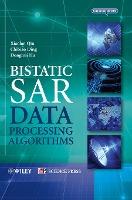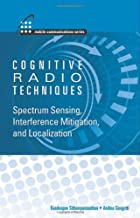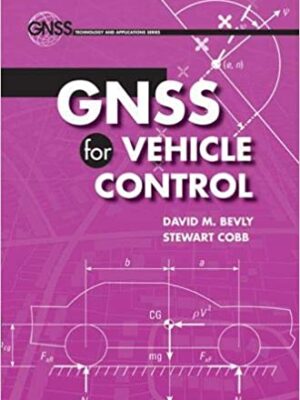Bistatic SAR DATA: Processing Algorithms
Original price was: ₹12,853.80.₹10,283.04Current price is: ₹10,283.04.
ISBN: 9781118188088
Author/Editor: Xiaolan Qiu
Publisher: John Wiley
Year: 2013
2 in stock (can be backordered)
Description
Synthetic Aperture Radar (SAR) is critical for remote sensing. It works day and night, in good weather or bad. Bistatic SAR is a new kind of SAR system, where the transmitter and receiver are placed on two separate platforms. Bistatic SAR is one of the most important trends in SAR development, as the technology renders SAR more flexible and safer when used in military environments. Imaging is one of the most difficult and important aspects of bistatic SAR data processing. Although traditional SAR signal processing is fully developed, bistatic SAR has a more complex system structure, so signal processing is more challenging. Focusing on imaging aspects of bistatic SAR signal processing, this book covers resolution analysis, echo generation methods, imaging algorithms, imaging parameter estimation, and motion compensation methods. The book is ideal for researchers and engineers in SAR signal and data processing, as well as those working in bistatic and multistatic radar imaging, and in the radar sciences. Graduate students with a background in radar who are interested in bistatic and multistatic radar will find this book a helpful reference. * Gives a general and updated framework for image formation using signal processing aspects * Starts with an introduction to traditional SAR before moving on to more advanced topics * Offers readers a range of exhaustive tools to process signals and form images * Provides a solid reference for the imaging of other complicated SAR * Sample image synthesis exercises are available from the book’s companion site
Additional information
| Weight | 0.82 kg |
|---|
Product Properties
| Year of Publication | 2013 |
|---|---|
| Table of Contents | About the Authors ix Preface xi Acknowledgements xiii List of Acronyms xv 1 Introduction 1 1.1 Overview of SAR Development 1 1.1.1 The History of SAR Development 1 1.1.2 The Current Status and Trends of SAR Development 3 1.2 Brief Introduction of Bistatic SAR 8 1.2.1 Basic Concept of Bistatic SAR 8 1.2.2 The Advantages and the Prospects of Bistatic SAR 8 1.2.3 The Present Status of Bistatic SAR Development 9 1.2.4 The Key Problems of Bistatic SAR 11 1.3 Contents of the Book 13 References 14 2 Signal Processing Basis of SAR 17 2.1 Range Resolution of SAR 17 2.1.1 Basic Concept of Range Resolution 17 2.1.2 Classical Theory of SAR Resolution 18 2.1.3 Linear Frequency Modulated Signal (Chirp Signal) 20 2.1.4 Matched Filter 22 2.2 Azimuth Resolution of SAR 24 2.2.1 Basic Concept of Azimuth Resolution 24 2.2.2 Theory of Synthetic Aperture 25 2.2.3 Realizing a Synthetic Aperture Using a Matched Filter 26 2.3 SAR Resolution Cell 29 2.4 SAR Processing Model ?Single-Point Target Imaging 32 2.4.1 SAR Echo Model of a Single-Point Target 32 2.4.2 Single-Point Target Imaging 33 2.5 Brief Introduction to Efficient SAR Imaging Algorithms 37 2.5.1 RD Algorithm 38 2.5.2 CS Algorithm 42 2.5.3 ?-k Algorithm 46 2.6 Summary 48 References 49 3 Basic Knowledge of Bistatic SAR Imaging 51 3.1 Bistatic SAR Configurations 51 3.2 Radar Equation of Bistatic SAR 53 3.3 Spatial Resolution of Bistatic SAR 55 3.3.1 Range Resolution 56 3.3.2 Azimuth Resolution 60 3.3.3 Resolution Cell of Bistatic SAR 80 3.4 Summary 80 References 81 4 Echo Simulation of Bistatic SAR 83 4.1 Introduction 83 4.2 Traditional Monostatic SAR Raw Data Simulation 84 4.2.1 Echo Signal Model and Simulation Theory 84 4.2.2 Implementation of the Simulation 86 4.2.3 Simulation Results 91 4.3 Raw Data Simulation for Translational Invariant Bistatic SAR 96 4.3.1 Short Bistatic Baseline Case 97 4.3.2 Long Bistatic Baseline Case 100 4.4 Summary 109 References 109 5 Imaging Algorithms for Translational Invariant Bistatic SAR 111 5.1 Introduction 111 5.2 Imaging Algorithms Based on Monostatic Transform 114 5.2.1 DMO Method 115 5.2.2 An Explanation of the DMO Method by Synthesizing Narrow Beams 119 5.3 Imaging Algorithms Based on Range History Simplification 120 5.3.1 Baseline Middle-Point Monostatic SAR Approximation 121 5.3.2 Hyperbolic Approximation 124 5.3.3 Advanced Hyperbolic Approximation 147 5.4 Imaging Algorithms Based on Analytical Explicit Spectrums 169 5.4.1 Imaging Algorithm Based on LBF 169 5.4.2 Imaging Algorithm Based on MSR 174 5.4.3 Imaging Algorithm Based on IDW 178 5.5 Imaging Algorithms Based on Accurate Implicit Spectrums 185 5.5.1 Implicit BPTRS 187 5.5.2 Decomposition of the Phase Spectrum 189 5.5.3 The Residual Phase Error and Phase Error Compensation 193 5.5.4 Simulation Results 196 5.6 Comparison of the Algorithms 204 5.6.1 Comparison of the Wavenumber Domain Algorithms 205 5.6.2 Comparison of the Wavenumber Domain Algorithms and the Range-Doppler Domain Algorithms 207 5.7 Summary 209 References 209 6 Imaging Algorithm for Translational Variant Bistatic SAR 213 6.1 Introduction 213 6.2 Imaging Algorithms for One-Stationary Bistatic SAR 214 6.2.1 Imaging Geometry and Signal Model 214 6.2.2 NLCS Algorithm Based on Azimuth Perturbation for the Strip Mode 216 6.2.3 Algorithm Based on the Keystone Transform for the Spotlight Mode 231 6.2.4 Algorithm for the One-Stationary Forward-Looking Configuration 244 6.3 Imaging Algorithms for Translational Variant Bistatic SAR with Constant Velocities 253 6.3.1 Imaging Geometry and the Signal Model 254 6.3.2 Imaging Processing Based on BPTRS 256 6.3.3 Imaging Processing Based on NuSAR 257 6.3.4 Simulations 262 6.4 Summary 269 References 270 7 Bistatic SAR Parameter Estimation and Motion Compensation 273 7.1 Introduction 273 7.2 Analyzing the Effects of Motion Errors 274 7.2.1 Attitude Error Analysis 274 7.2.2 Motion Error Analysis 277 7.3 Estimation of Doppler Parameters 284 7.3.1 Definition of the Doppler Centroid 285 7.3.2 Doppler Centroid Estimation Method Based on a Time?requency Domain Pre-Filter 287 7.4 Principle and Methods of SAR Motion Compensation 297 7.4.1 Principle of Motion Compensation 297 7.4.2 Sensor-Based Motion Compensation 299 7.4.3 SAR Data-Based Motion Compensation 306 7.5 Summary 310 References 310 Index 313 |
| Author | Xiaolan Qiu |
| ISBN/ISSN | 9781118188088 |
| Binding | Hardback |
| Edition | 1 |
| Publisher | John Wiley |
You must be logged in to post a review.






Reviews
There are no reviews yet.